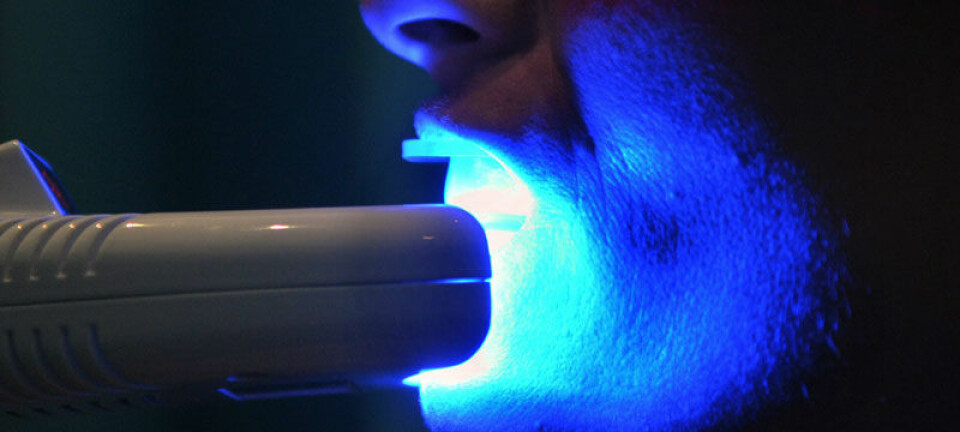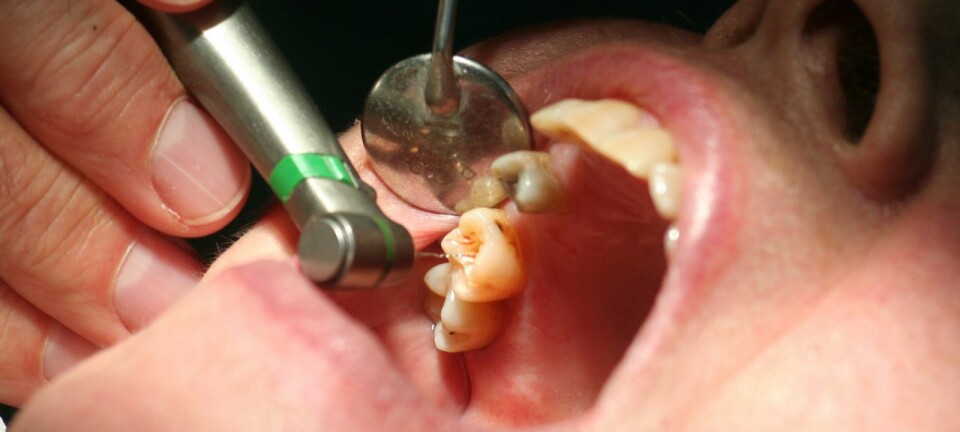
Fluorine stars with added sparkle
Next time you grab a tube of fluoride toothpaste, spare a thought for those stars dying so that you could have healthy teeth.
It may be one of our familiar chemical elements, but how fluorine originally was formed has not been that easy to uncover.
Several hypotheses have surfaced; it may have been created from supernova explosions, or forged in powerful solar winds.
But spectral analysis is now supporting a third option – fluorine may have been formed within red giants, stars similar to our own sun which swell up massively towards the end of their life span.
“The same fluorine that we find in our toothpaste could thus have originated in the long-dead ancestors of our sun,” says Nils Ryde, Reader in Astronomy at Lund University.
Fluorine in infrared light
A team of Swedish, Irish and US astronomers have examined the amount of fluorine and oxygen in seven nearby giant stars, using telescope and a newly developed infrared spectrometer.
”Spectrometers with the capacity of measuring infrared light in high resolution are complex and difficult to manufacture,” Ryde explains.
By analysing the spectrum of starlight it’s possible to find out the identity and quantity of chemical elements in the star, since each element leaves a signature marker in particular wavelengths that show up as bars in the electromagnetic spectrum – so-called ‘Fraunhofer lines’.
Flung into space
Chemical elements are forged inside stars under intense pressure and extreme temperatures, and – if the hypothesis is correct – fluorine was created in red giants in the last stages of the star’s life.
It was then gradually pushed towards the outer layers, which were flung into space by the shockwave when the core eventually collapsed.
As part of the interstellar material, fluorine would then be one of the elements forming new stars and planets – including our own solar system.
Measured same amount as in models
The seven stars examined by the researchers were formed in different stages of the universe’s development, and the differing amounts of fluorine measured would confirm or refute the fluorine hypothesis.
”Our derived abundances are well reproduced by chemical evolution models including only fluorine production in AGB stars,” the report confirms. AGB (Asymptotic Giant Branch) stars have a similar mass and life span as our sun.
“Therefore, we draw the conclusion that this might be the main production site of fluorine in the solar neighborhood,” the researchers conclude.
Living fast, dying young
The research team are now planning to study the amount of fluorine in other stars, in order to explore whether fluorine could have been formed under other circumstances, prior to red giants.
One interesting area is the core of the Milky Way, where the conditions are radically different to our solar neighbourhood.
The stars at the core are ’living fast and dying young’, orbiting a massive black hole at a greater speed and with a shorter life span.
”By examining the fluorine amounts in these stars we should be able to see whether they are formed through different processes,” adds Nils Ryde.
------------------------
Read the Norwegian version of this article at forskning.no








